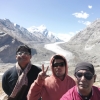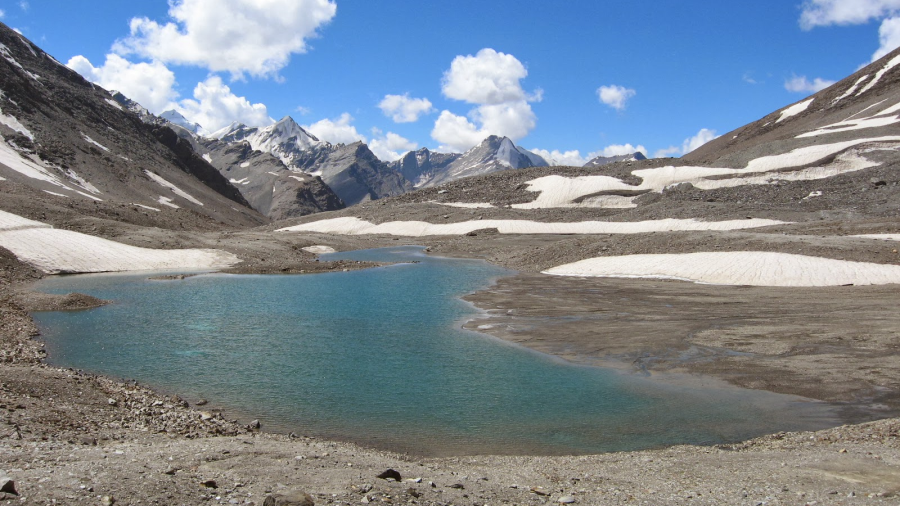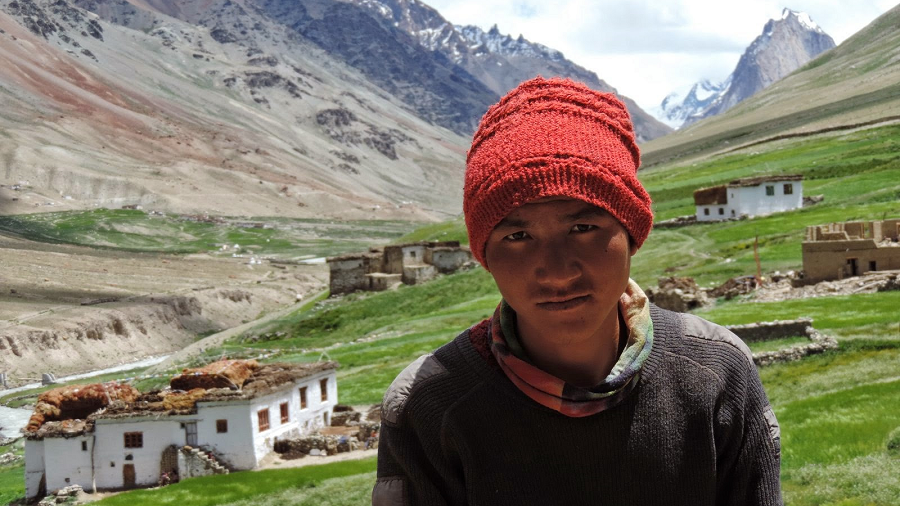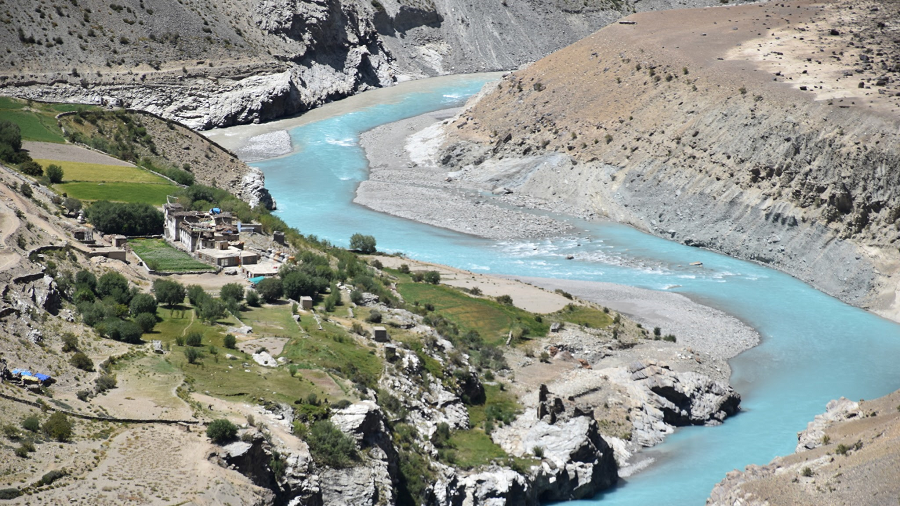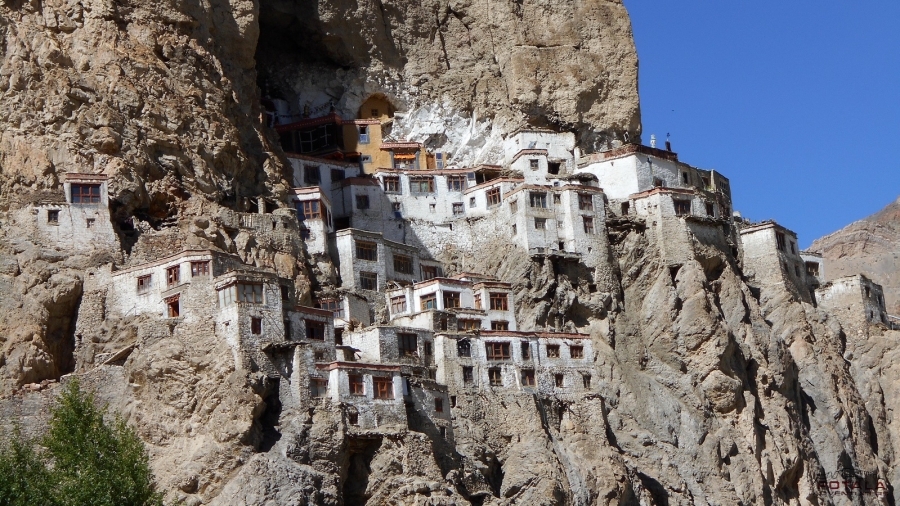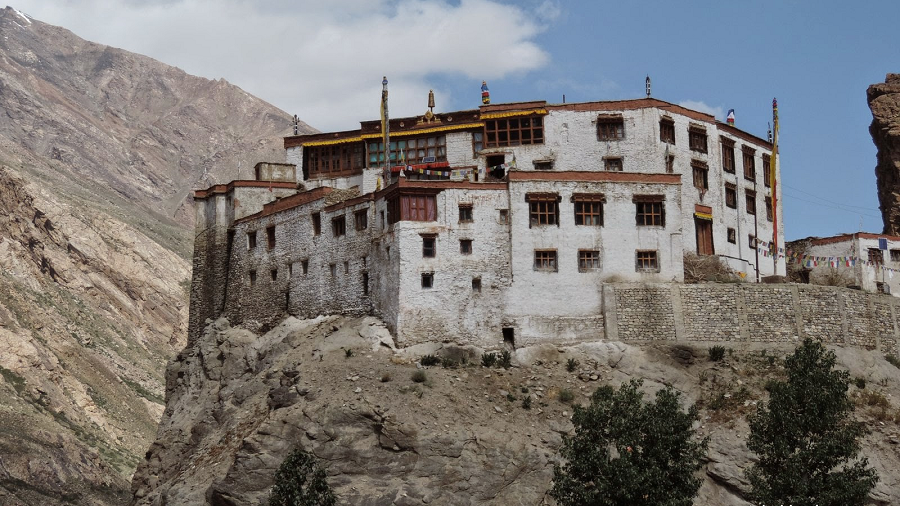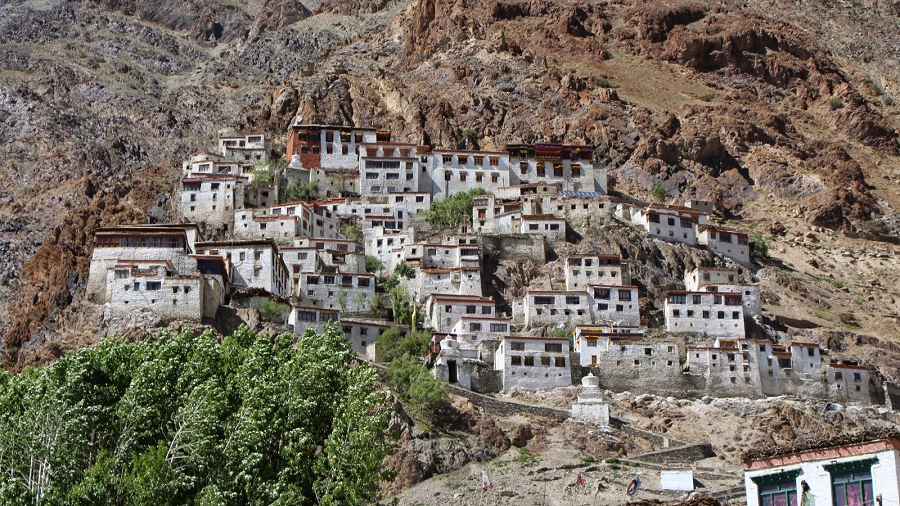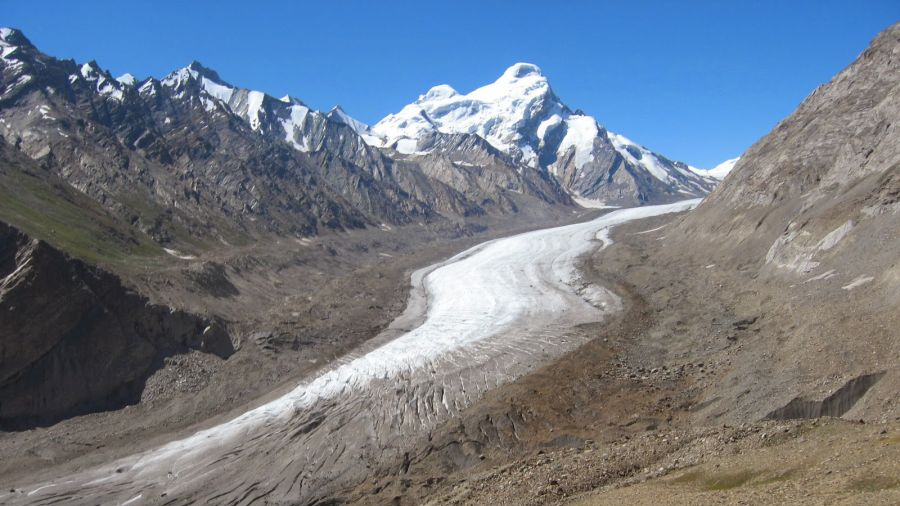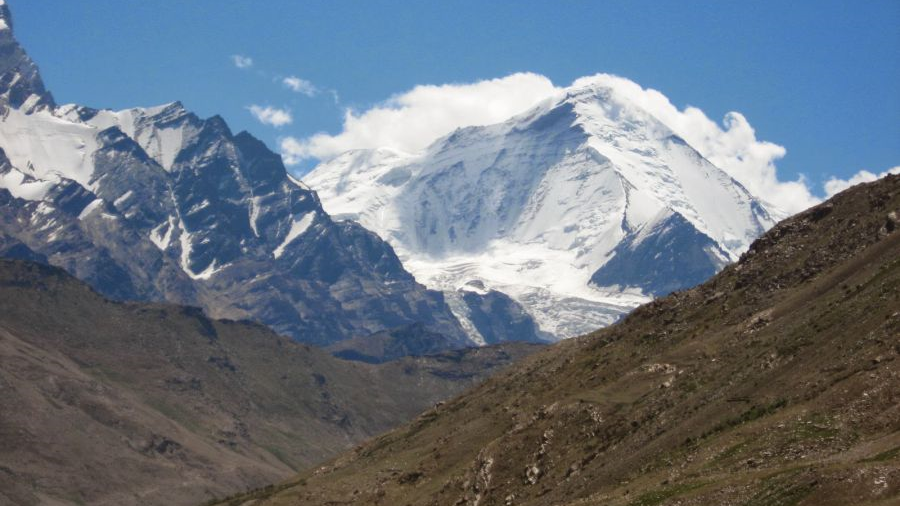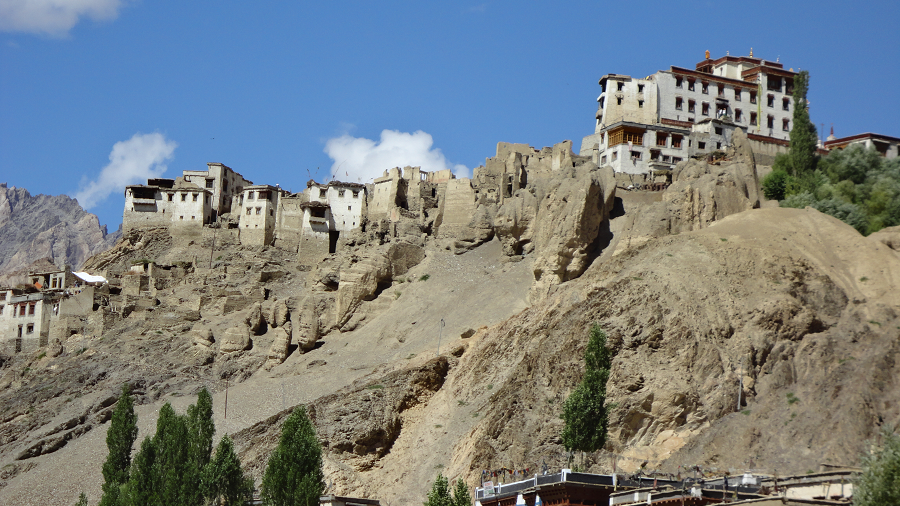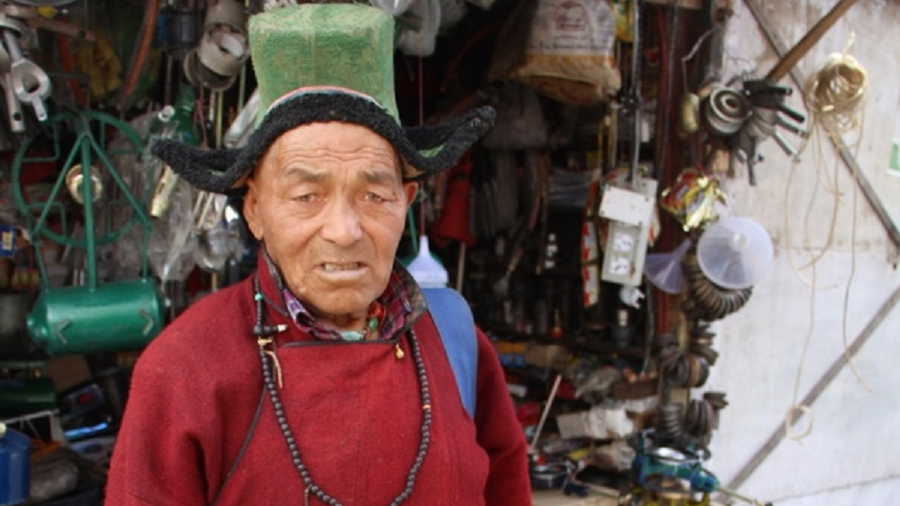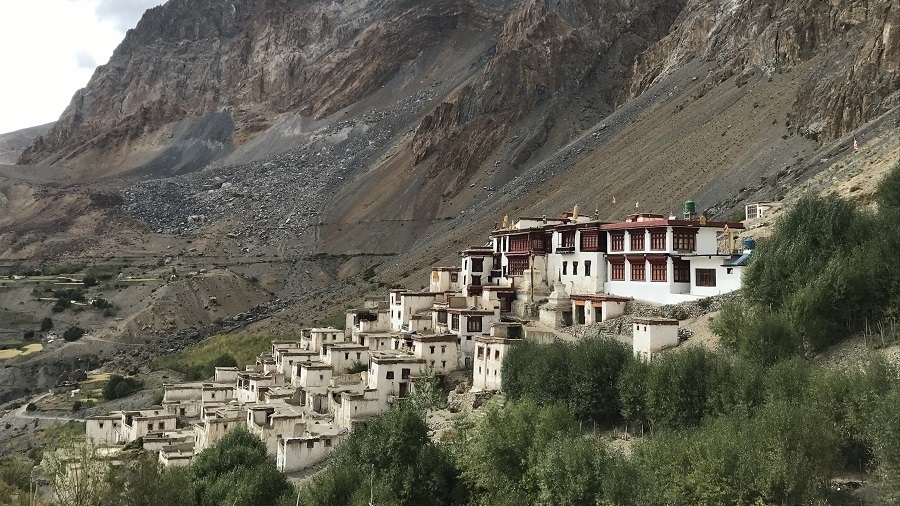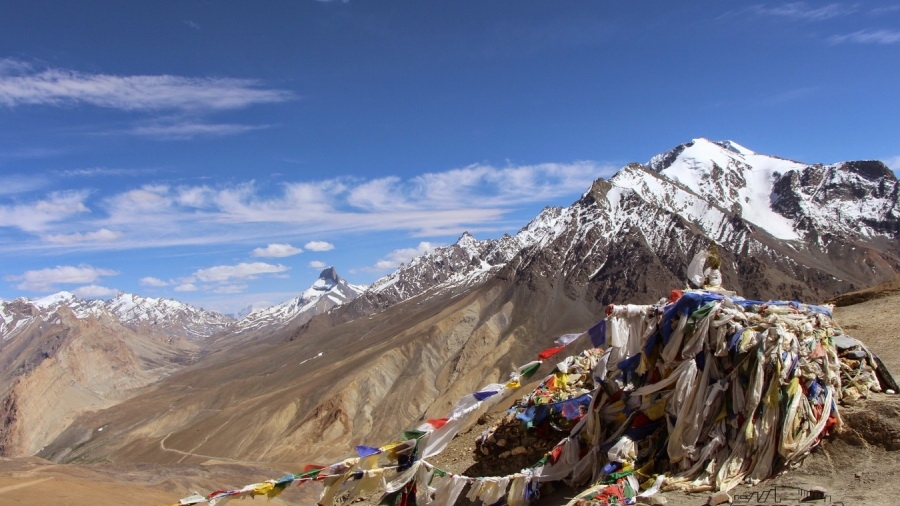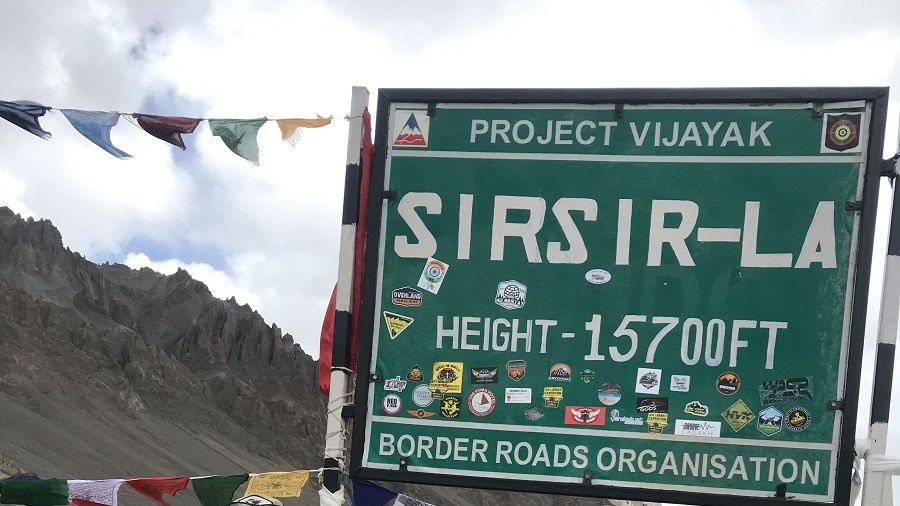Zanskar Himalaya Tour
Manali - Shinkun La - Zanskar Tour - Leh - 6 Days
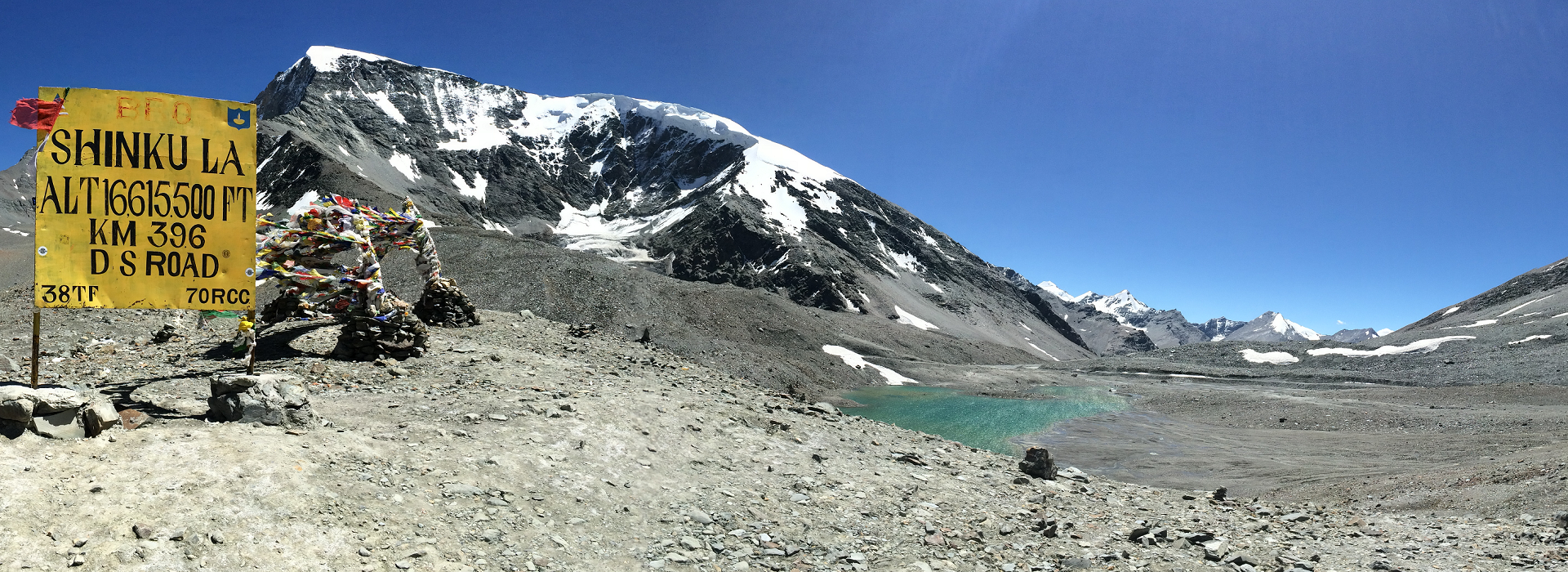
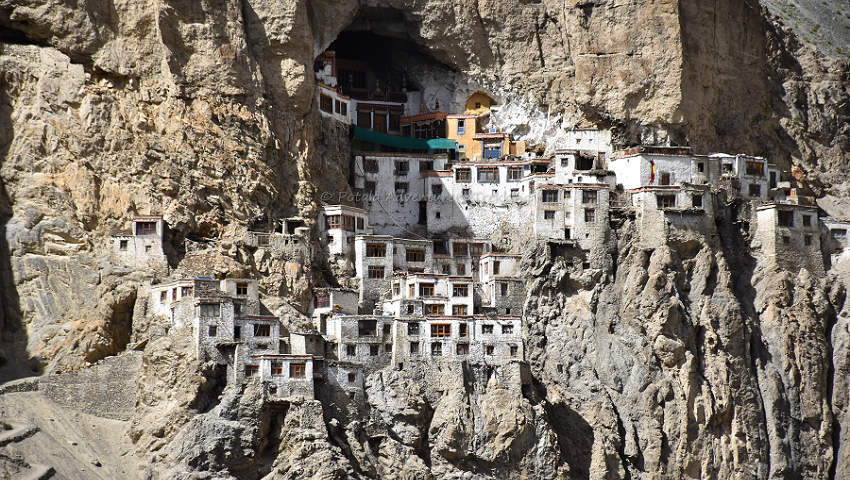
To visit Zanskar from Manali via Manali - Leh road and further from Leh - Kargil - Padum almost more than 600 km. Manali - Leh highway crosses four high mountain passes and remains closed for seven months in winter.
Now there is a new road opened that connects Manali - Padum via Shinkun La also known as Shingo La. After the Atal Rohtang tunnel, the Border Road organization will construct a Shinkun La tunnel to make the Manali - Padum - Leh all-weather road.
Shinkun La is the border between Ladakh and Himachal Pradesh.
This new road will take you from Manali to Zanskar in a couple of days. The ancient Zanskari trails are still untouched by the road where we do until now long-distance treks. Darcha - Padum - Lamayuru trail remained one of the best trekking routes in the Indian Himalayas for decades, now you can discover it in just a short period by road. Zanskar or Zangskar is a subdistrict or tehsil of the Kargil district, which lies in the Indian union territory of Ladakh. Padum the administrative center. Dominated mainly by Buddhists, together with the Ladakh, was once a part of the Guge kingdom in Western Tibet.
Setting off from Manali the first-day drive to Keylong Jispa via Atal Tunnel Rohtang, a new gateway to Lahaul, Spiti, Pangi, and Zanskar valleys. Passing through the beautiful Chandra valley with some spectacular views of peaks rising above 6000 m. At Tandi where Chandra & Bhaga meet to form a Chenab River, we enter Gahar Valley and continue to Jispa at Stod Valley. A night in Keylong or Jispa in Lahaul will ensure proper acclimatization.
Chikka and Rarik are the last villages in Lahaul before Shinkun la and Kurgiakh is the first village in Lungnak River valley of Zanskar. We cross Shinkun La (5,090 m) to get into Zanskar. Lakhong is a high pasture land where villager from Kurgiakh, Thangso village keep their domestic animals Yak, dzo, sheep, goats, and horses for summer grazing. This is the upper slopes of Zanskar where meadows are covered with edelweiss and at the foot of Gumborunjom peak 5580 m, a Blue poppy can be found. Next a series of beautiful villages along the route to Purney, which is located at the confluence of Kurgiakh chu and Tsarap River. Purney to Phugtal road is still under construction and 2:30 hrs of a walk to one of the most spectacular sights of Zanskar - The Phugtal gompa. Which is built under a huge cave. Continuing from Purney to Anmo village to Raru and finally to Karsha bypassing Mune, Bardan & Padum. Next couple of days visit the sights in the heart of Zanskar before entering in Ladakh at Lingshed. And crossing two passes namely Sengge La and Sirsir La to join the Srinagar - Leh road at Lamayuru. Exploring the Lamayuru and finally visiting Alchi and Likir, we drive to Leh. Where our trip ends.
ZANSKAR TOUR ITINERARY
Day 1: Manali to Atal Tunnel Rohtang - Keylong (3100 m) - Jispa (3200 m).
Day 2: Jispa - Shinkun La (5090 m) - Gonborangjum (4330 m) - Kurgiakh (4150 m) - Purney (3800 m).
Day 3: Purney - Phuktal (3900 m) - Purney - Raru (3800 m) - Padum (3600 m).
Day 4: Padum - Tungri - Phe - Hamiling - Abran - Aksho - Pensi La (4470 m) - Padum (3660m).
Day 5: Padum - Dzonkhul - Sani - Karsha (3750 m) - Stongde (3800 m) - Zangla palace (3650 m) - Lingshed (3900 m) - Sengge La (4940 m) - Photoksar (4150 m) - Sirsir La (4800 m) - Wanla.
Day 6: Wanla - Lamayuru - Alchi (3100 m) - Likir - Leh (3600 m).
MANALI - ZANSKAR TOUR - MANALI: 4 NIGHTS 5 DAYS
Day 1: Manali to Atal Tunnel Rohtang - Keylong (3100 m) - Jispa (3200 m) - Shinkun La (5090 m) - Gonborangjum (4330 m) - Kurgiakh (4150 m) - Purney (3800 m)
Day 2: Hike to visit Phuktal (3900 m), back to Purney - Raru (3800 m) - Padum (3600 m).
Day 3: Padum - Tungri - Phe - Hamiling - Abran - Aksho - Pensi La (4470 m) - Padum (3660m).
Day 4: Padum - Dzonkhul - Sani - Karsha (3750 m) - Stongde (3800 m) - Zangla (3650 m) - Anmo (3870m).
Day 5: Anmo - Shinkun La - Atal Tunnel - Manali
___________________
ZANSKAR TOUR TRIP DOSSIER
Day +: Arrive in Delhi and Drive to Manali (2050 m)
Arrive at Delhi Indira Gandhi International Airport. Pickup by private car drive to Manali. Leaving Delhi drive a 4-5 hours journey to Chandigarh, watching the changing scenery roll by. Chandigarh is almost the end of the line, located at the point where the Indian plains meet the foothills of the Himalayas. You continue your journey into the mountains, following the Beas River to enter the Kulu Valley, one of the most picturesque valleys in the Indian Himalayas. The road winds its way past pine-clothed mountain slopes giving glimpses of snow-capped peaks and through small settlements with their fields of rice and maize and little walled orchards. Eventually, you reach the upper part of the Kulu Valley and arrive at the popular tourist resort of Manali. Manali is approximately 300km from Chandigarh and the journey will take us around 7 hours. We check into the hotel. To help with acclimatization before we start trekking you spend the day in Manali at just over 2000 meters. This is a very popular tourist town and you visit some of its famous sights while you are here. You can visit the colorful Hadimba Temple, the medieval wooden palace at Naggar with its art museum, and enjoy a soak in the Vashisht hot springs. It is also fun to walk around the sprawling bazaar. a day for final preparation before leaving for Zanskar.
Day 1: Manali to Atal Tunnel Rohtang - Keylong (3100 m) - Jispa (3200 m). ACCLIMATIZE.
Starting the trip from Manali, which is located at the head of the lush green Kullu valley. Leaving Manali first to Solang and then to the Atal Tunnel Rohtang, which is now the new gateway to Lahoul, Spiti, Pangi, and Zanskar Valley. The landscape changes dramatically, the greenery being replaced by barren hillsides, surrounded by high peaks, and hanging glaciers, and the village with its bountiful fields of barley, peas, and potatoes, stands out in stark contrast. On entering Lahoul the Buddhist influence is visible in the many monasteries crossed on the way. The people here have distinct Tibetan features. From Tandi along the Bhaga River to Keylong and the hotel in Jispa.
Day 2: Jispa - Darcha - Shinkun La (5090 m) - Gomborangjum (4330 m) - Kurgiakh (4150 m) - Tangze (4000 m) - Purney (3800 m).
Leaving Jispa, We drive to Darcha and continue to Chikka & Rarik, the last two villages before Shinkun La. Crossing the bridge at Palamo and then along the river to Zanskar Sumdo. Leaving Zanskar Sumdo the road passes through the second bridge and then up the right-hand valley following the stream, which comes from Shinkun La (Shingo la). The highest point of our trip was at 5,090 meters. On top of Shinkun la, there are prayer flags and mani stones that tell the story of those people who crossed over years back. With an impressive view of the Zanskar side of the valley, we take summits rising above 6000 m of the Great Himalayan range. The road descends to Pankeya and further to Lakhong we reach the valley floor. Lakhong is high pasture land for yaks, dzo, and sheep, where domestic animals are kept during summertime and produce cheese, and butter for winter stock. Along the right bank of Kurgiakh chu and below the mass of fallen rocks of Gumborungjum peak. We finally arrive at Kurgiakh, the first village of Zanskar. We pass the Karu, Tangze village to a series of stupas before reaching Purney. Purney is situated at the confluence between Tsarap and Kurgiak chu and forms the Lungnak River valley.
Day 3: Purney (3800 m) - Phuktal (3900 m) - Purney - Raru (3800 m) - Padum (3600 m).
Purney to Phuktal distance: There will be a halfway road and a half walk. So keep 5-6 hrs for this day.
Leaving early today from Purney to Phuktal to reach Gompa during morning prayer time. It's a two-hour hike to Phuktal also called Phukthar. We depart early from Purney on a well-defined trail along the left bank of the Tsarap River. Shortly before Phuktal, we cross the Tsarap River by hanging bridge. This monastery is built under a huge cave and it belongs to the Gelukpa sect of Tibetan Buddhism. The road between Purney to Phuktal is still under construction, thus we walk from Purney to Phuktal. There is a stone tablet that serves as a reminder of the stay of Alexander Csoma de Koros at Phuktal, while he worked on the first English-Tibetan dictionary between 1826 and 1827 when he explored Ladakh. Afternoon retraces back to Purney.
Leaving Purney, the road passes through the beautiful village of Raru village. En route passing and visiting Bardan gompa continue to drive to Padum.
Day 4: Padum - Tungri - Phe - Hamiling - Abran - Aksho - Pensi La (4470 m) - Padum (3660m).
Leaving Padum first to Tungri and passing many small villages along the route to Pensi La. Pensi La is known as "The gateway to Zanskar" which connects the Suru Valley to the Zanskar region. The Nun and Kun peaks both above 7000m can be seen. The Drang Drung glacier to the Eastern flank of Pensi La is the source of the Stod or Doda River, which flows into central Zanskar and joins with Tsarap Chu to form the Zanskar River. Which is famous for the frozen river of Zanskar known as the Chadar route. After visiting the Pensi la drive back to Padum for an overnight stay.
Day 5: Padum - Dzonkhul - Sani - Karsha (3750 m) - Stongde (3800 m) - Zangla palace (3650 m) - Lingshed (3900 m) - Sengge La (4940 m) - Photoksar (4150 m) - Sirsir La (4800 m) - Hanumil - Phenjila - Wanla.
Leaving Padum a short drive to Ating village and continuing to Tungri. Take a diversion to the left to Bardur River beside Stod Valley. Dzonkhul belongs to the Drukpa sect of Tibetan Buddhism & traditionally home to famous yoginis. Dzonkhul is also a starting point of the trek that leads to Umasi la which joins Zanskar and Pangi Kishtwar. Built directly on a rock wall with two caves behind. The Huchot festival is famous at Dzonkhul. After visiting Dzonkhul we drive back to Ating and continue to visit Sani Gompa before reaching the Padum and finally visiting Karsha monastery. Karsha is one of the biggest monastic complexes in the Zanskar region.
Leaving Karsha today first we visit Thongde, which is built on a hilltop by Lama Marpa and is more than 950 years old finally, drive to visit Zangla Fort. Visiting Zangla, and finally, drive along the right banks of the Zanskar River for a few hours before crossing the bridge to Lingshed. Now you are in the Ladakh region and you have crossed the Zanskar territory. Zanskar boundary finishes after Hanuma la, which is situated across the Lingshed area.
Leaving Lingshed the road winds up to Sengge La. Sengge in Tibetan means "Lion". So it's "Lion pass", the view and formations of the pass appear like a lion, from pass a panoramic view of Zanskar range. A short below Sengge la you will be in Photang Valley, it's a high pasture land, where the villager of Photoksar keep their Yaks, Dzo, and horses for summer grazing. Now road descends to Photoksar. Photoksar is a remote, isolated, and charming village. After Photoksar the road winds up to Sirsir la and descends to Hanumil and later through the magnificent gorge to Phenji la. Along the river is a nice road to Wanla. Which is quite a beautiful village.
Day 6: Wanla - Lamayuru - Alchi (3100 m) - Likir - Leh (3600 m).
You continue to join the Leh - Srinagar highway and take this road to Lamayuru, we drive to the Alchi monastery, situated at a distance of 68 km from Leh. Its monastery is built on lowlands rather than on a hilltop as others are, to protect from enemies. The Chortens around Alchi Gompa contains numerous murals of Lotsava Rinchen Zangpo, who built this monastery. Alchi monastery has vast collections of wall paintings and wood sculptures. After the visit continues our journey to Likir and Leh.
Starting the trip from Manali, which is located at the head of the lush green Kullu valley. Leaving Manali first to Solang and then to the Atal Tunnel Rohtang, which is now the new gateway to Lahoul, Spiti, Pangi and Zanskar valley. The landscape changes dramatically, the greenery being replaced by barren hillsides, surrounded by high peaks, hanging glaciers, and the village with their bountiful fields of barley, peas, and potatoes, stand out in stark contrast. On entering Lahoul the Buddhist influence is visible in the many monasteries crossed on the way. The people here have distinct Tibetan features. From Tandi along the Bhaga River to Keylong and to the hotel in Jispa.
Homestay at Purney.
Jispa to Shinkun La
distance: 43 km
Shinkun la to Purne: 48 km
Leaving Jispa, We drive to Darcha and continue to Chikka & Rarik, the last
two villages before Shinkun La. Crossing bridge at Palamo then along the river
to Zanskar Sumdo. Leaving Zanskar Sumdo the road passes through the second
bridge then up the right-hand valley following the stream, which comes from
Shinkun La (Shingo la). The highest point of our trip at 5,090 meters. Top of
Shinkun la there are prayer flags and mani stones that are telling the story of
those people who cross over years back. With an impressive view to Zanskar side
the valley we take and summits rising above 6000 m of Great Himalayan range.
The road descends to Pankeya and further to Lakhong we reach the valley floor.
Lakhong is high pasture land for yaks, dzo, and sheep, where domestic animals
are kept during summertime and produce cheese, butter for winter stock. Along
the right bank of Kurgiakh chu and below the mass fallen rocks of Gumborungjum
peak. We finally arrive at Kurgiakh, the first village of Zanskar. We pass the
Karu, Tangze village to a series of stupas before reaching Purney. Purney is
situated at the confluence between Tsarap and Kurgiak chu and forming the
Lungnak River valley.
Purne to Phuktal distance: There will be half way road and half way by
walk. So keep 5-6 hrs for this day.
Leaving early today from
Purney to Phuktal and to reach gompa during morning prayer time. It's a two
hours hike to Phuktal also called Phukthar. We depart early from Purney on a
well-defined trail along the left bank of Tsarap River. Shortly before Phuktal,
we cross the Tsarap river by hanging bridge. This monastery is built under a
huge cave and it belongs to the Gelukpa sect of Tibetan Buddhism. The road
between Purney to Phuktal is still under construction, thus we walk from Purney
to Phuktal. There is a stone tablet that serves as a reminder of the stay of
Alexander Csoma de Koros at Phuktal, while he worked on the first
English-Tibetan dictionary between 1826 and 1827 when he explored Ladakh.
Afternoon retrace back to Purney.
Leaving Purney, the road passes through the beautiful village of Raru
village. En route passing and visiting Bardan
gompa continue to drive to Padum.
Padum to Pensi La distance: 79 km
Pensi la to Padum distance: 79 km
Leaving Padum first to Tungri and passing many small villages along the route to Pensi La. Pensi La is known as "The
gateway to Zanskar" connects the Suru valley to the Zanskar region. The
Nun and Kun peaks both above 7000m can be seen. The Drang Drung glacier to the
Eastern flank of Pensi La is the source of Stod or Doda River, which flows into
central Zanskar and joins with Tsarap Chu to form the Zanskar River. Which is
famous for the frozen river of Zanskar known as the Chadar route. After visit
the Pensi la drive back to Padum for overnight stay.
Leaving Padum a short drive to Ating village and continuing to Tungri. Take a diversion to the left to Bardur River beside Stod Valley. Dzonkhul belongs to the Drukpa sect of Tibetan Buddhism & traditionally home to famous yoginis. Dzonkhul is also a starting point of the trek that leads to Umasi la which joins Zanskar and Pangi Kishtwar. Built directly on a rock wall with two caves behind. The Huchot festival is famous at Dzonkhul. After visiting Dzonkhul we drive back to Ating and continue to visit Sani Gompa before reaching the Padum and finally visiting Karsha monastery. Karsha is one of the biggest monastic complexes in the Zanskar region.
Leaving Karsha today first we visit Thongde, which is built on a hilltop by Lama Marpa and is more than 950 years old finally, drive to visit Zangla Fort. Visiting Zangla, and finally, drive along the right banks of the Zanskar River for a few hours before crossing the bridge to Lingshed. Now you are in the Ladakh region and you have crossed the Zanskar territory. Zanskar boundary finishes after Hanuma la, which is situated across the Lingshed area.
Leaving Lingshed the road winds up to Sengge La. Sengge in Tibetan means "Lion". So it's "Lion pass", the view and formations of the pass appear like a lion, from pass a panoramic view of Zanskar range. A short below Sengge la you will be in Photang Valley, it's a high pasture land, where the villager of Photoksar keep their Yaks, Dzo, and horses for summer grazing. Now road descends to Photoksar. Photoksar is a remote, isolated, and charming village. After Photoksar the road winds up to Sirsir la and descends to Hanumil and later through the magnificent gorge to Phenji la. Along the river is a nice road to Wanla. Which is quite a beautiful village.
You continue to join Leh - Srinagar highway and take this road to Lamayuru, we drive to the Alchi monastery, situated at a distance of 68 km from Leh. Its monastery is built on lowlands rather than on a hilltop as others are, in order to protect from enemies. The Chortens around Alchi gompa contain numerous wall murals of Lotsava Rinchen Zangpo, who built this monastery. Alchi monastery has vast collections of wall paintings and wood sculptures. After the visit continues our journey to Likir and Leh.
- All ground transportation by 4wd vehicle as per the itinerary Manali - Padum - Leh with an experienced driver.
- 5 nights of hotel accommodation with bed, breakfast & dinner.
- First aid medical kit with mini oxygen bottles.
- Mineral water.
× Domestic flight.
× Lunch while on tour.
× Hotel in Manali & Leh.
× Travel insurance.
× Soft or hard drinks.
× Entrance fee at monasteries.
× Any unforeseen cost arises from natural hazards rain, snow, or roadblocks which cost extra lodging & boarding beyond the trip Schedule.
“We enjoyed the trip very much.The arrangements you made throughout the tour was excellent,staff was expert and helpful,in future will request you for such types of tour and definitely will recommend our friends/relatives etc. Regards and thanks”.
